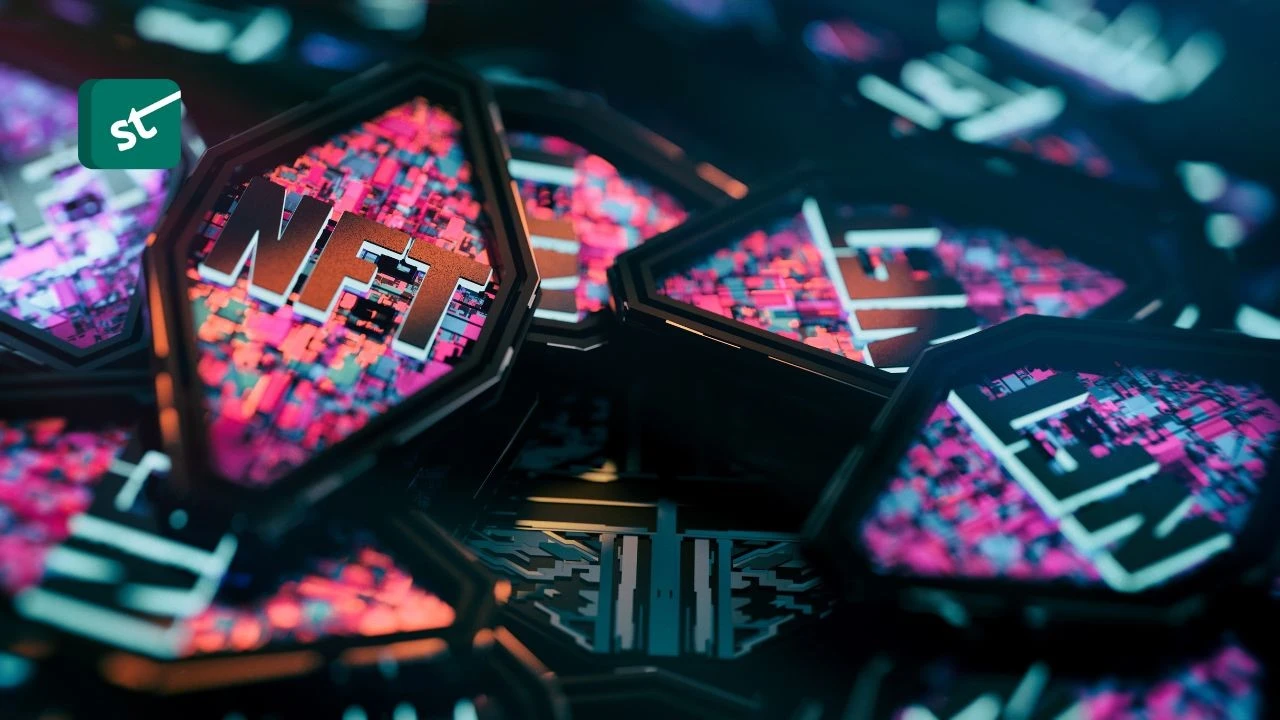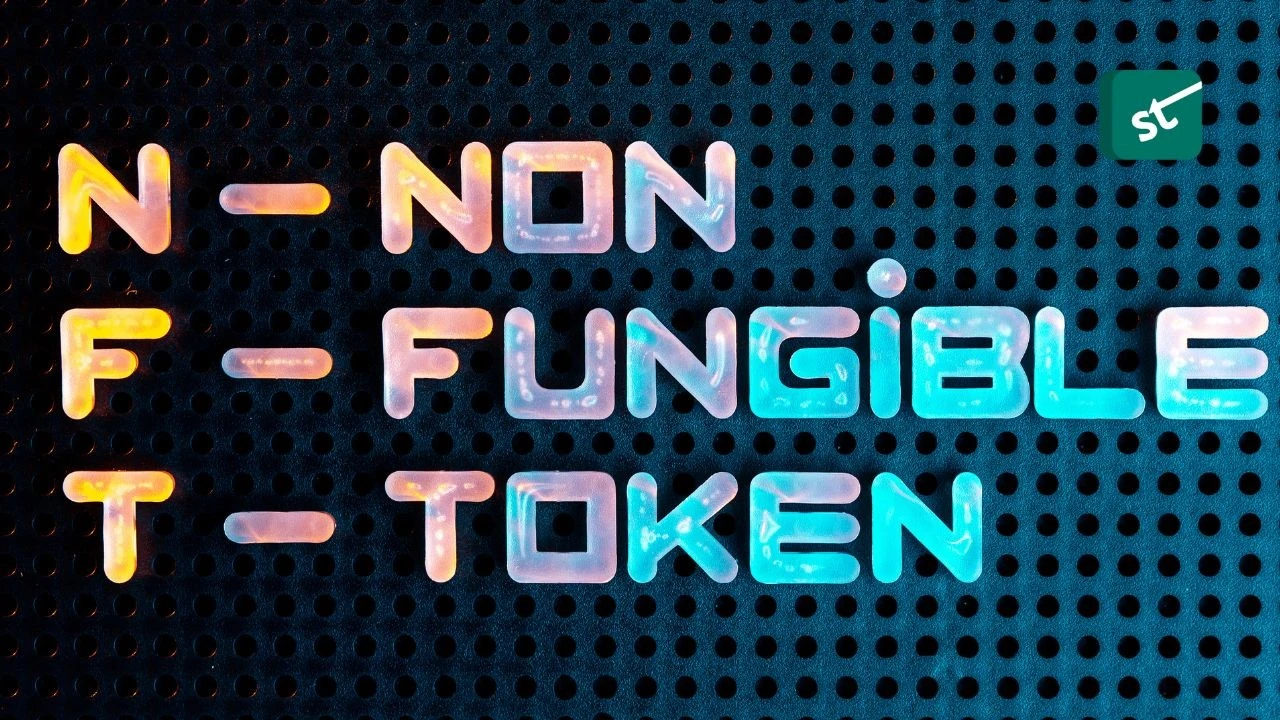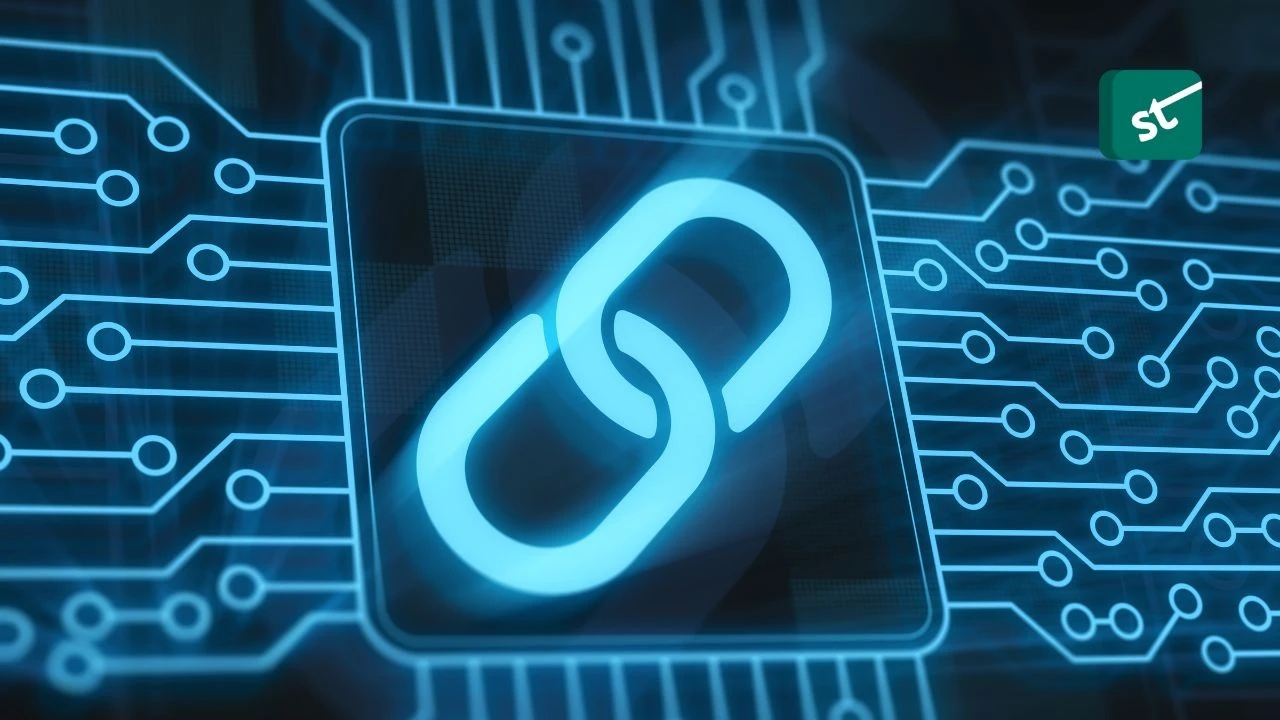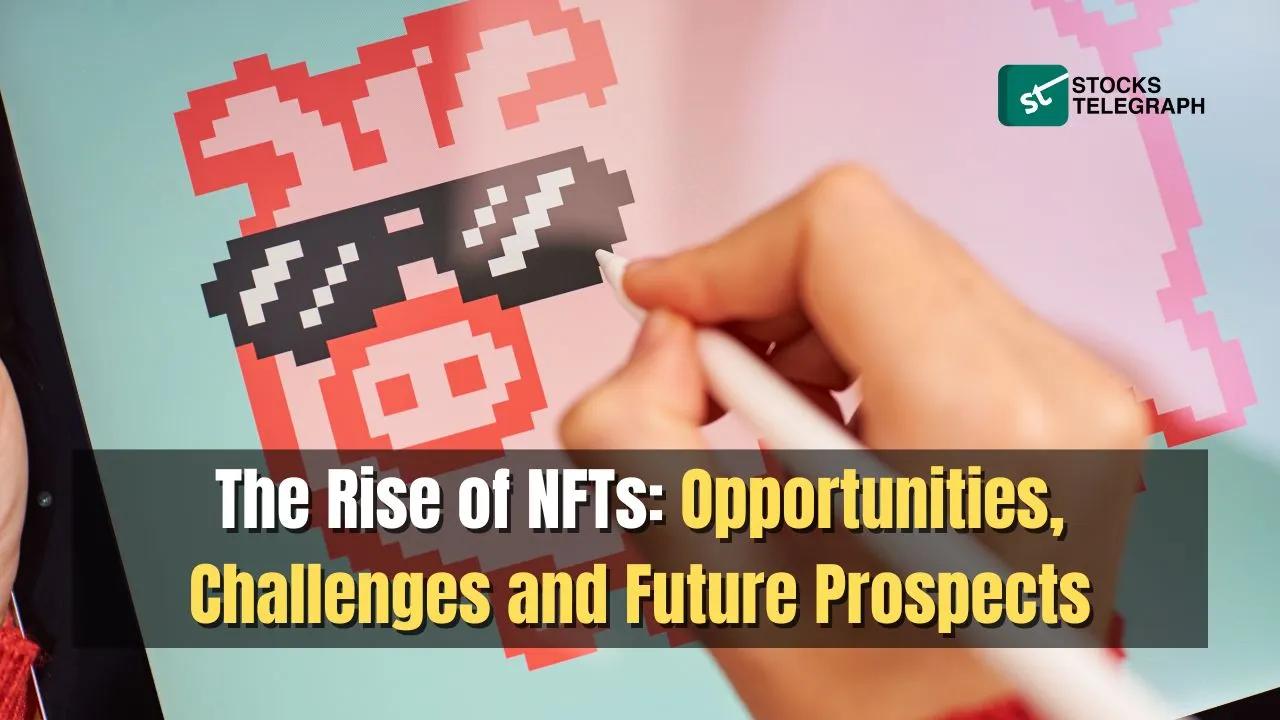If you’ve been keeping an eye on the ever-evolving developments in digital assets, you’ve probably heard about the buzz surrounding Non-Fungible Tokens (NFTs).
Today, we dive into why understanding what are NFT tokens is crucial for savvy investors like you, exploring the exciting opportunities they offer and the potential rewards they can bring to your investment portfolio.
By understanding what are NFT tokens you can tap into some groundbreaking opportunities within a space that is reshaping the way we perceive and value art, collectibles, and even real estate.
What Is a Non-Fungible Token (NFT)?
So, let’s jump right into it: exactly what are NFT tokens? Well, let’s imagine you’re strolling through a virtual art gallery. You stumble upon a stunning digital artwork—let’s say it’s a mesmerizing painting of a cosmic landscape.

Now, here’s the interesting part: while you can easily save a copy of the image on your computer or smartphone, what makes this artwork unique is its non-fungible nature.
“NFT” stands for “Non-Fungible Token.” “Non-fungible” might sound like a mouthful, but it simply means something that cannot be exchanged on a one-to-one basis, like a traditional currency. In other words, it’s one-of-a-kind and cannot be replicated exactly.
Think of it like owning an original Picasso painting. Sure, you could buy a print of the painting and hang it on your wall, but it wouldn’t possess the same value as the actual masterpiece itself.
That’s the essence of an NFT—it’s a digital certificate of ownership that proves you have the original, unique version of a digital asset, through the power of blockchain, whether it’s artwork, music, videos, digital real estate, or even tweets.
History of Non-Fungible Tokens (NFTs)
When we discuss what are NFT tokens, it’s important to understand their roots and how they have evolved over time.
It all started in May 2014, when Kevin McCoy and Anil Dash introduced “Quantum,” the first-known NFT.
Jennifer, McCoy’s wife, created a video clip that she registered on the Namecoin blockchain and subsequently sold to Dash for just $4.
This groundbreaking idea established a connection between a non-fungible, exchangeable blockchain token and an artwork.
Fast forward to October 2015, when Etheria, the first NFT project, was launched at Ethereum’s developer conference. However, it wasn’t until 2021 that NFTs gained widespread attention.
The release of CryptoKitties, an online game where people could trade adorable digital cats, brought NFTs into the limelight.
The NFT market saw tremendous growth in 2020, with its value tripling to $250 million. In the first three months of 2021 alone, over $200 million was spent on NFTs.
High-profile sales and art auctions further fueled the frenzy around these unique digital assets.
While the market experienced a decline in 2022, it’s important to remember that markets fluctuate.
NFTs are still a new and evolving phenomenon, and their future prospects are influenced by various factors.
What Does Non-Fungible Mean?
So, what exactly does the term “non-fungible” mean when we talk about NFTs? Well, let’s break this down in order to gain clarity in our discussion about what are NFT tokens.

In essence, “non-fungible” refers to the unique nature of something, implying that it cannot be swapped for or replaced by anything else.
Think of it like this: if you have a Bitcoin and you trade it for another Bitcoin, you essentially have the same thing.
That’s because bitcoins are fungible. They are interchangeable units of currency, just like dollar bills.
But when it comes to non-fungible tokens, it’s a different story. Let’s imagine you have a one-of-a-kind piece of art, like the Mona List portrait.
That card is non-fungible because it has unique qualities that set it apart from any other painting.
If you were to trade the Mona Lisa for a different portrait, you wouldn’t just be exchanging one painting for another; you would be getting an entirely different piece of art with its own distinct value and characteristics.
That’s the beauty of non-fungible tokens. Each NFT is like a digital certificate of ownership, confirming the authenticity and uniqueness of a particular asset, whether it’s digital artwork, music, virtual real estate, or even collectibles.
They enable artists, creators, and investors to embrace the concept of scarcity and establish value in a digital world.
What is NFT Used For?
Any discussion that attempts to answer the question of what are NFT tokens would essentially be incomplete without dabbling into the use case of these digital assets.
NFTs, or non-fungible tokens, have taken the digital world by storm, offering endless opportunities and a few challenges along the way.
They have revolutionized industries and created new avenues for expression and investment.
NFTs are used everywhere, from the vibrant realm of digital art, where artists can directly sell their unique creations to collectors, to the dynamic world of gaming, where players can trade in-game items and virtual assets,
But NFTs don’t stop there—they have also made their mark in music, sports, virtual fashion, and even digital identity verification.
The use cases are boundless in a dynamic space that continues to evolve every single day.
Examples of NFTs
In the NFT space, the possibilities are as diverse as they are exciting.

In this section, let’s delve into some noteworthy NFT examples that have taken so many creative industries by storm. These examples highlight the best non fungible tokens NFT opportunities:
-
Photography
NFTs have given photographers a whole new way to showcase and sell their stunning digital images.
Now, you can own a limited-edition piece of photographic art and proudly display it in your digital collection, knowing it’s an authentic and unique creation.
-
Sports
Sports fans, get ready to take your fandom to the next level! With some NFT examples, you can own digital collectibles that capture legendary sports moments.
Imagine owning a virtual trading card featuring your favorite player’s epic strike or game-winning goal—it’s in many ways similar to being a part of the action in a whole new way.
-
Trading Cards
Remember collecting trading cards back in the day? Well, NFTs have given this classic hobby a digital makeover.
Now, you can buy, sell, and trade digital cards with verifiable authenticity.
It’s simply a next-gen way of having a virtual binder filled with rare and valuable cards – except now it’s all stored digitally rather than physically through various NFT examples.
-
Utility
NFTs aren’t just for art and collectibles – they have real-world utility too. Several NFT examples exist with a utilitarian nature.
From virtual land ownership in immersive gaming worlds to exclusive access passes for events, NFTs unlock exciting experiences and perks that make you feel like a VIP in the digital realm.
-
Virtual Worlds
Step into a whole new reality with NFTs and virtual worlds. You can buy and sell virtual assets like land, avatars, and in-game items, creating your own digital kingdom and immersing yourself in endless adventures.
The only constraints on what is possible in this exciting space are dictated solely by your imagination.
-
Art
NFTs have revolutionized the art scene, making it easier than ever to discover and own unique digital artworks.
Whether it’s a mesmerizing digital painting or a mind-bending 3D sculpture, collecting digital art through NFTs allows you to support talented artists and curate a personal gallery that reflects your taste and style.
-
Collectibles
NFTs have also turned collecting into a digital treasure hunt. You can now hunt for and own digital collectibles that range from virtual pets and characters to rare and valuable items.
Thanks to the power of NFTs, anyone can build their own personal museum, filled with digital treasures that hold both sentimental and monetary value.
-
Domain Names
Did you ever dream of owning a premium domain name? Well, NFTs have made that dream a reality.
Now you can buy and sell digital addresses with ease, giving your online presence a unique and memorable identity that stands out in the vast digital landscape.
-
Music
NFTs are changing the game for musicians. Artists can release exclusive tracks, albums, and experiences as digital collectibles, giving you a chance to own a piece of music history.
Imagine owning a digital album that comes with backstage passes and special perks. NFTs make it possible to have a front-row seat to the creative process.
Benefits of Non-Fungible Tokens
Now that we have thoroughly gone over what are NFT tokens, let’s dive into the benefits of NFT tokens investors face by investing in these digital assets.
The rise of NFTs has opened up a world of possibilities for investors, combining many of the benefits of NFT tokens. Some of these are discussed below, as follows:
-
Unique Ownership
NFTs grant you exclusive ownership of digital assets, making you the proud custodian of a one-of-a-kind piece.
You would essentially own a rare gem that stands out in the digital realm.
-
Digital Asset Potential
With NFTs, you can venture beyond traditional investments and explore the vast landscape of digital assets.
From captivating artwork to virtual real estate, the possibilities are boundless, offering a fresh perspective on asset diversification while also being a potential hedge against inflation.
-
Market Potential
The NFT market has witnessed remarkable growth, attracting artists, collectors, and enthusiasts.
By investing in NFTs, you position yourself at the forefront of a burgeoning market, poised for potential value appreciation.
-
Royalties and Resale Potential
Smart contracts embedded in many NFTs empower creators to earn royalties even from secondary sales.
So, when you invest in an NFT and it changes hands in the future, the original artist might still receive a slice of the pie, making it a win-win for both creators and investors.
-
Transparency and Authenticity
Blockchain technology lies at the heart of NFTs, ensuring transparency and trust.
This means you can rest assured knowing that the authenticity and origin of your digital asset are securely recorded, mitigating the risk of counterfeit or fraudulent items.
-
Accessibility and Fractional Ownership
NFTs bring accessibility to high-value assets. Through fractional ownership, even with limited capital, you can partake in the ownership of assets that would otherwise be out of reach.
-
Community Engagement
The NFT space thrives on vibrant communities of creators, collectors, and enthusiasts.
By investing in NFTs, you not only gain financial potential but also opportunities for networking, collaboration, and meaningful engagement with like-minded individuals who share your passion.
-
Cultural Significance
NFTs hold the power to reshape the way we value and appreciate digital art, music, and cultural artifacts.
As an investor in NFTs, you play a crucial role in supporting artists and creators, acknowledging their talent, and contributing to the preservation of cultural heritage in the digital age.
How Can I Buy NFTs?
Now that you know a thing or two about what are NFT tokens you are ready to dive into this innovative market and explore the opportunities it holds.
So, let’s walk through the process of buying NFTs step by step:
-
Open A Crypto Exchange Account
To get started, you’ll need to create an account on a reliable crypto exchange platform. There are several popular exchanges out there, like Coinbase, Binance, and Kraken.
Take a moment to research and select the exchange that suits your needs in terms of security, user-friendliness, and available features.
-
Open A Crypto Wallet
Now, let’s talk about wallets—the digital equivalent of your personal vault. Set up a wallet, whether it’s a web-based one or a hardware wallet like Ledger or Trezor.
Think of it as your digital safe space for storing your precious NFTs.
-
Transfer Ethereum into A Crypto Wallet
To buy NFTs, you’ll need some Ethereum (ETH), the primary cryptocurrency in this realm.
Head back to your crypto exchange account, locate your Ethereum wallet, and initiate a transfer to your newly created crypto wallet.
-
Buy NFTs
Now, the fun part—buying NFTs! Explore different categories, browse through collections, and let your imagination roam freely.
When you spot an NFT that speaks to you, click on it to learn more.
Verify its authenticity and check if the price feels right. If it resonates with you, connect your wallet to the marketplace and finalize the purchase
Are NFTs Safe?
Now let’s tackle the question on everyone’s mind: Are NFTs a safe investment?

The NFT market is notorious for its wild price swings. Just like a rollercoaster, the value of NFTs can go up and down in the blink of an eye.
This volatility means you need to be prepared for sudden changes in your investment.
Another risk to be aware of is the potential for scams and fraud. Since NFTs exist solely on the blockchain, it can be tough to verify their authenticity.
The market is still like the Wild West of the crypto world, with few regulations by the SEC in place to protect investors.
Furthermore, with the very nature of NFTs, perception and market inefficiencies play a big role. It becomes highly challenging to gauge and quantify internet hype.
This makes it far more difficult to value an NFT than a stock valuation.
Even for those looking to factor out the hype, determining the fair market value of NFTs based on past performance can be tricky, especially when you have to consider the rarity and resale potential of individual items within a collection.
With its unique and decentralized nature, it’s not as straightforward as watching a line chart for Bitcoin or Dogecoin.
However, efforts are being made to develop indices to help investors analyze this peculiar market.
While some may claim that NFTs are a guaranteed ticket to riches, the reality might be a bit different.
Recent performance indicators, like the Nansen NFT-500 index, show a decline in the market. It’s important to keep this in mind when considering NFTs as an investment option.
In the end, it’s all about weighing the risks and potential rewards. NFTs can be an exciting and innovative space, but it’s crucial to approach it with caution.
Do your research, understand the risks involved, and consider consulting with a professional before taking the plunge into the NFT market.
What Is an NFT Marketplace?
When it comes to the domain of NFTs, marketplaces play a crucial role in connecting buyers, sellers, and creators.
In this section, we’ll take a closer look at the different types of NFT marketplaces: open, closed, and proprietary:
-
Open Marketplace
An open marketplace is a bustling platform, where NFTs from various artists and creators are showcased for sale.
These marketplaces are open to anyone, allowing artists and collectors from around the world to participate.
In an open marketplace, you’ll find a diverse range of NFTs, spanning different genres, styles, and themes.
From digital art and collectibles to virtual real estate and gaming assets, there’s something for everyone.
It’s a vibrant ecosystem that fosters interaction, discovery, and the exchange of unique digital assets. NFTs are highly liquid under this paradigm.
-
Closed Marketplace
Unlike open marketplaces, closed marketplaces operate on an invite-only or selective basis.
They often feature curated collections or exclusive offerings from renowned artists, celebrities, or established brands.
Closed marketplaces create a sense of exclusivity, catering to a more niche audience seeking unique and high-value NFTs.
In a closed marketplace, you can expect limited-edition releases, one-of-a-kind collaborations, and a heightened level of curation.
These marketplaces often prioritize quality, ensuring that the NFTs showcased meet certain standards or align with specific themes.
Being part of a closed marketplace can give you access to rare and coveted NFTs that hold both financial and cultural significance.
-
Proprietary Marketplace
A proprietary marketplace is a unique type of NFT platform that is built and operated by a specific company or organization.
These marketplaces offer a personalized touch, often tailored to the platform’s brand, vision, and community.
They provide a seamless and cohesive experience, combining features like buying, selling, and interacting within their ecosystem.
A proprietary marketplace can be an integral part of a larger platform or project, such as a blockchain-based gaming platform or a social media network.
It aims to provide a dedicated space for users to engage with NFTs within the platform’s ecosystem, fostering a sense of community and shared experiences.
Examples of NFT marketplaces
NFT marketplaces represent the diverse opportunities available in the digital asset space.
Whether you’re an art aficionado, a sports fanatic, or an aspiring creator, they each offer a gateway to explore, trade, and own unique digital assets that resonate with your passions.
The following are the most popular NFT marketplaces you can turn to:
-
OpenSea
If you’re eager to immerse yourself in the world of NFTs, OpenSea is an excellent place to start.
OpenSea is designed with user-friendliness in mind, ensuring that both creators and collectors of all backgrounds can easily navigate and participate in this thriving ecosystem.
-
NBA Top Shot
For sports enthusiasts and basketball fanatics, NBA Top Shot brings the excitement of the game to the world of NFTs.
Here, you can own and trade officially licensed NBA moments, immortalizing jaw-dropping highlights from your favorite players.
It’s an incredible opportunity to own a piece of basketball history and share in the thrills that make the sport so captivating.
-
Nifty Gateway
Looking for a marketplace that celebrates the artistry and creativity behind NFTs? Nifty Gateway is your go-to destination.
With a curated selection of digital artwork, this platform provides a space for both established and emerging artists to showcase and sell their captivating pieces.
If you’re seeking unique and limited-edition creations, Nifty Gateway has got you covered.
-
Rarible
Imagine a marketplace that empowers you to become a creator and sell your own digital assets.
That’s precisely what Rarible offers—a space where anyone can mint and sell their unique NFTs.
It’s all about putting the power of creation in your hands, allowing you to monetize your talent and engage directly with a community of artists, collectors, and enthusiasts.
Rarible fosters an environment that nurtures creativity and encourages collaboration.
NFT Scams
As the popularity of NFTs continues to soar, it’s crucial for investors to stay informed and be aware of potential scams in the market.
In this section, we’ll shed light on a few common types of NFT scams you should be cautious about:
-
Catfishing
Just like in the world of online dating, catfishing is a concern in the NFT space too. Scammers may create fake profiles or use deceptive tactics to misrepresent the authenticity or value of an NFT.
So, before diving into a purchase, do your due diligence and verify the legitimacy of the NFT and the seller.
-
Counterfeit NFTs
With the rise of digital art, counterfeit NFTs have become a pressing issue.
Fraudsters may attempt to replicate or plagiarize original artwork, claiming it as their own or selling fake copies.
To protect yourself, it’s wise to verify the credibility and reputation of the artist or creator before investing in their NFT.
-
Pump-and-Dump Schemes
Unfortunately, the crypto world isn’t immune to pump-and-dump schemes, and NFTs are not an exception.
In these scenarios, scammers artificially inflate the price of an NFT through aggressive marketing tactics, only to sell it off at its peak, leaving unsuspecting investors with a devalued asset.
It’s crucial to exercise caution and thoroughly research the NFT and its underlying value before making any investment decisions.
-
Free Mint Scams
Be wary of offers that sound too good to be true, such as free NFT mints.
Scammers might entice you with promises of free or extremely cheap NFTs, but in reality, they may be seeking to collect your personal information or gain unauthorized access to your digital wallet.
Conclusion
As we conclude our exploration into the rise of NFTs, it becomes abundantly clear that these unique digital assets have opened up a world of new opportunities for investors.
We have witnessed incredible success stories and groundbreaking sales, showcasing the potential for substantial financial gains.
However, like any emerging technology, NFTs also present their fair share of challenges and uncertainties.
While the NFT market continues to evolve and mature, it is important for investors to approach it with a well-informed and balanced perspective.
As we have discussed, understanding the use cases of NFTs, carefully evaluating the marketplaces, and conducting thorough due diligence are crucial steps in navigating this exciting yet volatile landscape.
FAQs
Why Are NFTs Becoming Popular?
NFTs are gaining popularity due to their ability to authenticate ownership of unique digital assets, providing new opportunities for creators and collectors in the digital realm.
Are NFTs Cryptocurrency?
While NFTs utilize blockchain technology like cryptocurrencies, they are distinct as they represent ownership of specific digital assets rather than acting as digital currency.
What is NFT Digital Art and How Does NFT Art Work?
NFT digital art refers to artwork that is tokenized as an NFT, providing a verifiable record of ownership and provenance on the blockchain, enabling artists to monetize their creations and collectors to purchase and own unique digital pieces.
